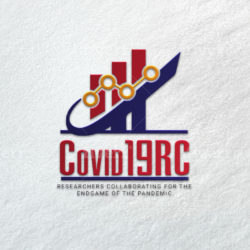COVID-19 has become a major challenge to policymaking. In a context of high uncertainty, rapidly changing circumstances and a highly fluid base of evidence and scientifically-grounded predictions – policy-makers have to take decisions on which human lives and the economy depend. Using ideas and constructs from modern decision theory, the authors of this paper propose ways to arrive at decisions that remain valid for a wide range of futures and keep options open, while allowing for a responsible and transparent policy-making process.
Rotation as Contagion Mitigation
In their new paper, Jeffrey Ely, Andrea Galeotti and Jakub Steiner study how to organize workforce rotation in order to minimize the risk of contagion. Frequent rotation may be advisable if an organization is able to detect/react to infections quickly. Infrequent rotation is optimal when organisations react slowly.
Waning Immunity and the Second Wave
In this paper, Chryssi Giannitsarou, Stephen Kissler, and Flavio Toxvaerd, consider the optimal social distancing policy in an SEIRS model of the COVID-19 epidemic in which immunity wanes over time. We calibrate the model to the US and consider the effects of different waning periods for the dynamics of the disease and the path of optimal control. We show that the possibility of waning immunity qualitatively changes the trajectory of social distancing even at early stages of the epidemic and that the return to susceptibility creates the potential for a second wave of infection.
Triage Protocol Design for Pandemic Rationing – new scheme practiced by hospitals of the University of Pittsburgh
Rationing of medical resources is a critical issue in the COVID-19 pandemic. In this paper, Parag A. Pathak, Tayfun Sönmez, M. Utku Unver, M. Bumin Yenmez develop a model for rationing through a reserve system rather than the so far dominant priority point system. In a reserve system, resources are placed into multiple categories. Priorities guiding allocation of units can reflect different ethical values between these categories. A reserve system provides greater flexibility because it does not dictate a single priority order for the allocation of all units. Instead it allows to balance competing objectives. The paper also discusses several practical considerations with triage protocol design.
The proposed reserve system has been put to a test when the 40 hospitals of the University of Pittsburgh Medical Center recently had to ration the antiviral Rendesivir and employed the system to steer allocation.
Plasma Shot and Market Design – proposed scheme now in practice
A promising new quasi-vaccine technology is to use anti-bodies from recovering covid-19 patients to provide vaccine-like protection. This technology is entering clinical trials. Effective supply is quite limited due to the need to acquire plasma from recovering patients: how to increase availabitity of COVID-19 convalescent plasma (CCP) and how best to allocate it is studied by Scott Kominers, Parag Pathak, Tayfun Sönmez, and Utku Ünver. This research is a fusion of medical science and social science and illustrates the benefits of collaboration.
The researchers’ proposed incentive based scheme to increase access to CCP therapy has had remarkable impact latey, as the US-based Covid Plasma Initiave decided to adopt the scheme.
CERGE-EI Recommendations
CERGE-EI has developed a set of recommendations for safe re-opening. Although specifically oriented towards Czechia there are broader lessons here as well.
Public Opinion Research on COVID-perceptions in Austria
The Corona-Blog of the Vienna Center for Electoral Research presents up-to-date public opinion research on perceptions in Austria of a wide array of covid-related issues.
Global repository for COVID-related Social Science Research
To facilitate global cooperation and information sharing, the University of Colorado Boulder is setting up a registry for ongoing public health and social science research related to the COVID-crisis. Add your project now!
Mechanism Design for Pandemics
In times of crisis, such as a pandemic, markets may not work well for products or services under urgent demand, say for exmaple virus tests. Mechanism design, proposes Eric Maskin, can be enlisted to help.
Targeting high-contact individuals can improve containment
Drawing on models developed by network scientists, Gianluca Manzo and Arnout van de Rijt suggest that targeted testing of highly connected individuals can dramatically improve containment in a population coming out of lockdown and help preventing a second wave. Concrete procedures could be acquaintance sampling and employment-based targeting.
